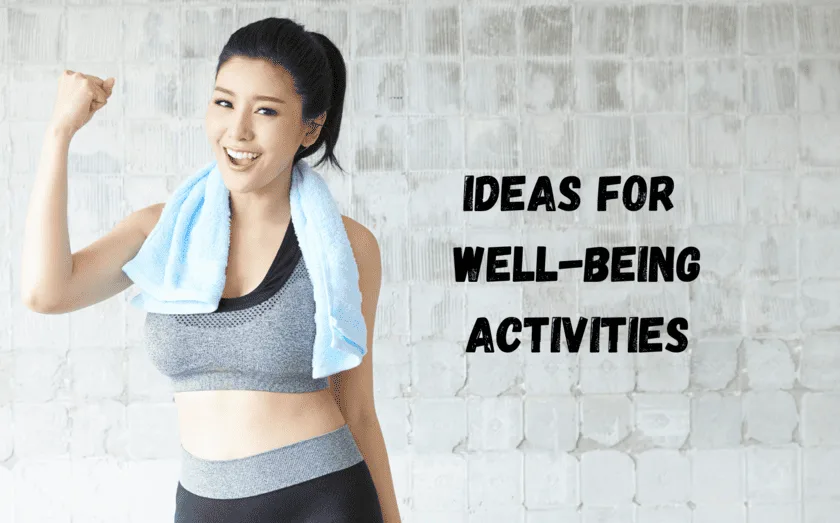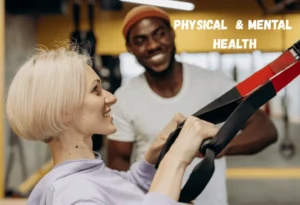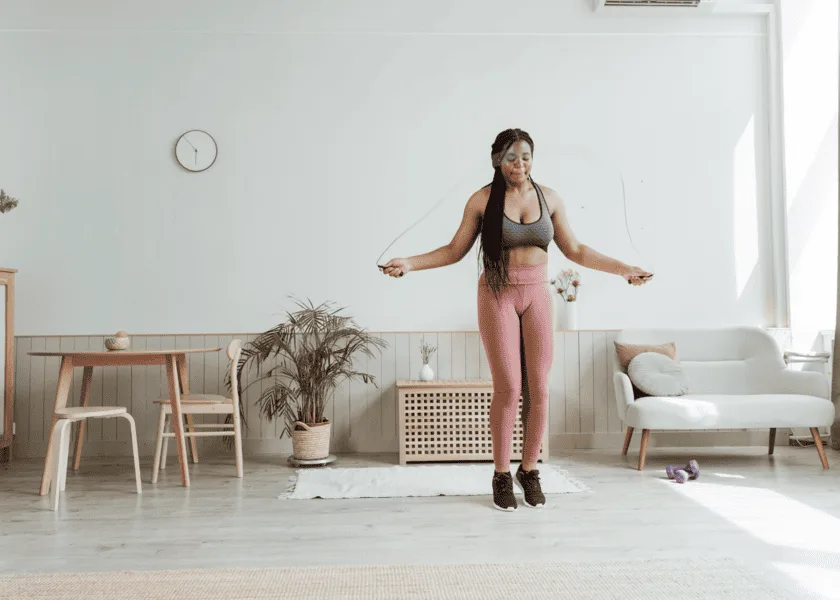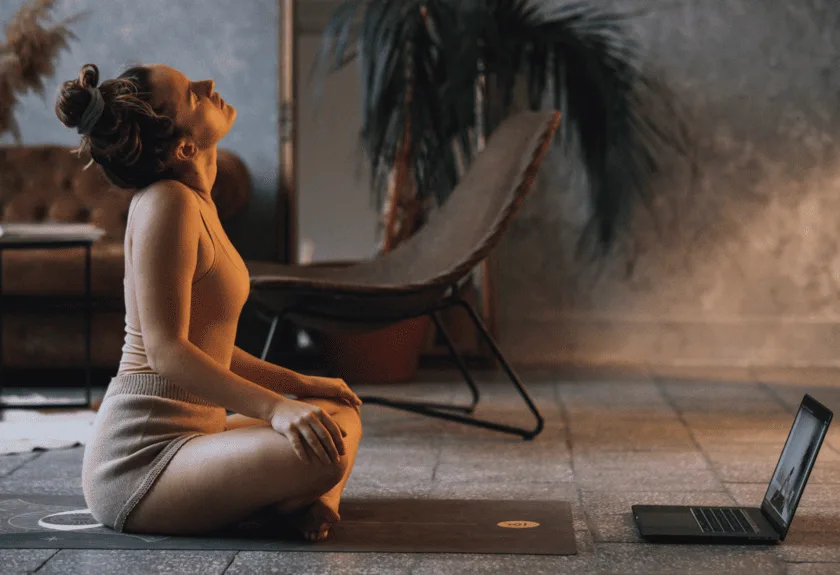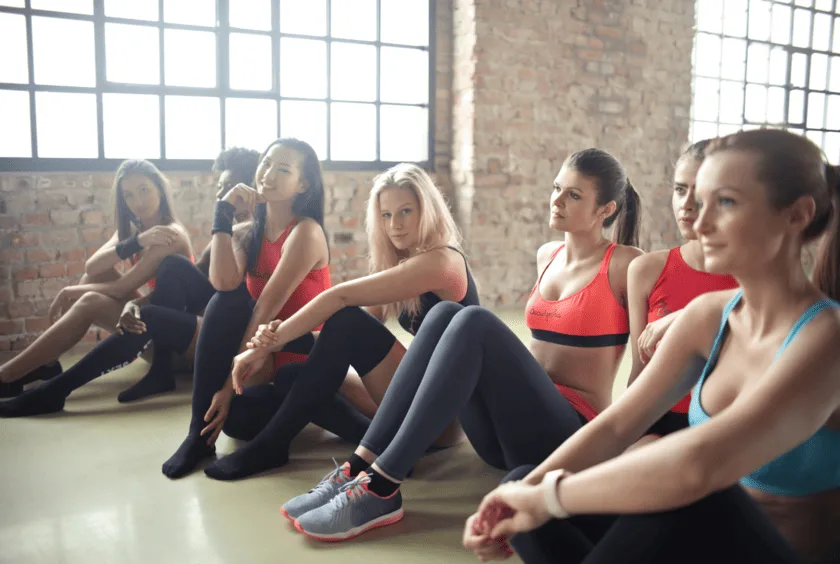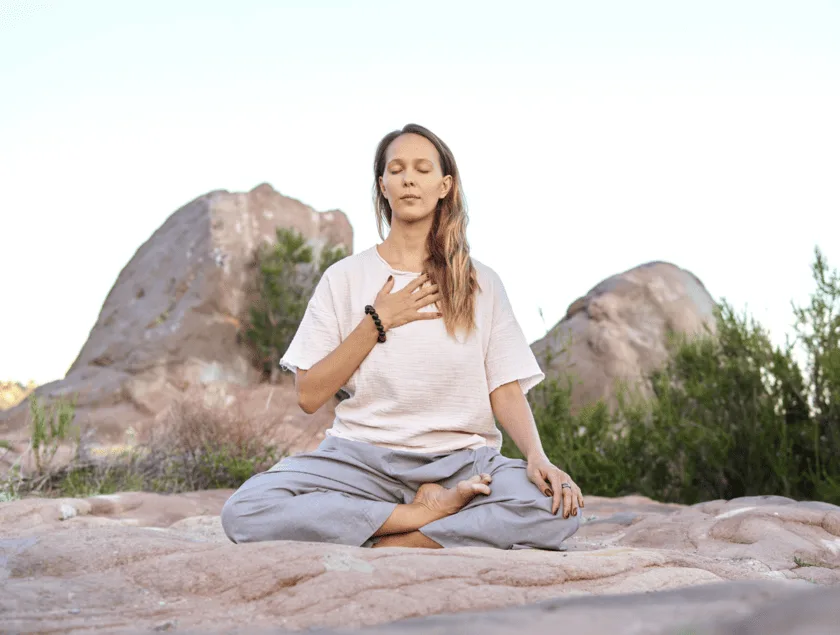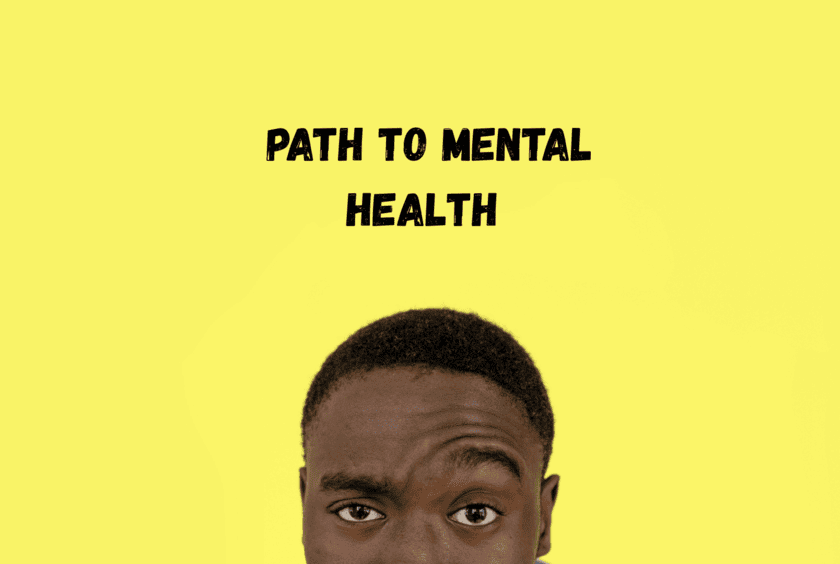What is well-being and why it goes beyond physical health
When we talk about well-being, it’s common to associate it first with physical health: balanced nutrition, regular exercise, and medical check-ups. However, the concept of well-being is much broader and involves a harmonious integration of body, mind, and spirit.
It encompasses how we feel emotionally, how we deal with stress, how we connect with others, and even how we find purpose and meaning in life.
Holistic well-being is not limited to the absence of disease but rather a state of balance that allows us to live fully and resiliently. It’s about taking care of ourselves in a holistic way, recognizing that each aspect of our life influences the whole. For example, an overwhelmed mind can affect physical health, just as a lack of spiritual connection can impact emotional well-being.
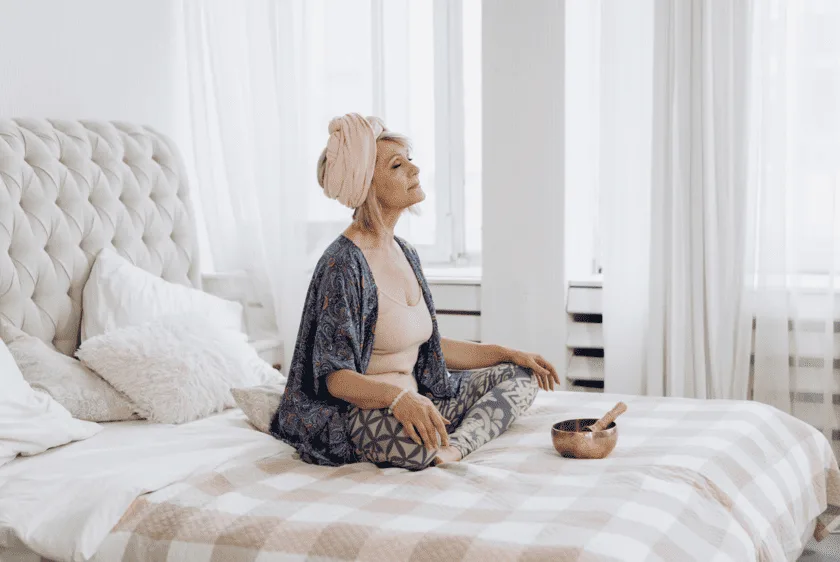
How small activities can generate big impacts
Often, the idea of pursuing holistic well-being can seem overwhelming, especially in a busy routine. However, small actions can have a significant impact when done consistently. You don’t need to dedicate hours of your day or follow complex plans to start feeling positive changes.
- Conscious breathing: Just a few minutes of deep breathing can reduce stress and bring mental clarity.
- Daily movement: A 10-minute walk already contributes to physical and mental health.
- Gratitude: Writing down three things you’re grateful for each day can improve your mood and outlook on life.
- Digital disconnection: Taking time to unplug from electronic devices helps recharge your energy.
These simple practices, when incorporated into your daily life, create a cumulative effect that can transform your quality of life. The secret lies in consistency and the intention behind each action, not the grandeur of the gesture.
Physical activities for daily well-being
Quick exercises to do at home or work
Incorporating movement into your routine doesn’t have to be complicated or time-consuming. Small active breaks can revitalize the body and mind, especially for those who spend long periods sitting or with limited mobility. Here are some practical suggestions:
- Basic stretches: raising arms, gently turning the neck, or stretching legs for 30 seconds relieves tension.
- Light squats: supported by a chair, bending the knees (without forcing) strengthens the legs and improves circulation.
- Breathing with movement: inhaling while raising arms and exhaling while lowering them synchronizes body and mind.
The key is to adapt the exercises to your space and rhythm. Even 5-minute sessions, repeated 2–3 times a day, make a difference.
Mindful walks: how to turn a walk into self-care
Walking is more than just physical exercise—it can be a ritual of presence. The practice of mindful walking combines movement and mindfulness:
“Feel the weight of your body with each step, notice the texture of the ground under your feet, and follow the rhythm of your breath. Allow thoughts to come and go without judgment.”
To incorporate this technique:
- Start slow: set aside 10 minutes for the walk to the store or around the block, for example.
- Use your senses: notice sounds, smells, and the feeling of the wind on your skin.
- Slow down your pace: walk as if you were exploring a new place.
This simple approach turns an everyday activity into a moment of reconnection with yourself.
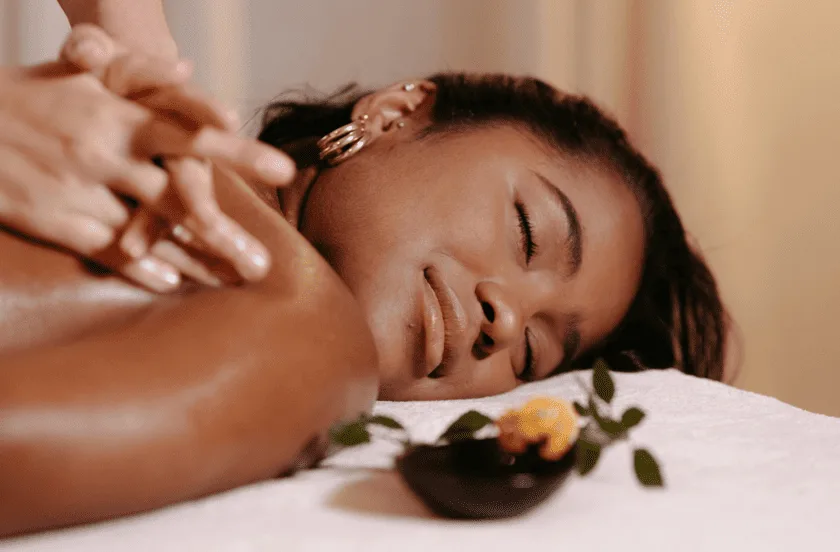
Mental health care
Breathing tips to relieve stress
Amid the rush of daily life, breathing can be a powerful ally to calm the mind and reduce tension. Have you noticed how, in anxious moments, your breathing becomes fast and shallow? The good news is we can reverse this process in a simple and quick way, even during work breaks or while in traffic. Try these two practical approaches:
- 4-7-8 Breathing: Inhale through your nose counting to 4, hold for 7 seconds, and exhale through your mouth for 8 seconds. Repeat 3 to 5 times. This technique helps reduce heart rate and induces relaxation.
- Diaphragmatic breathing: Place one hand on your chest and the other on your abdomen. Inhale deeply through your nose, feeling your abdomen expand (not your chest). Exhale slowly through your mouth. Ideal for emotionally overwhelming moments.
“Conscious breathing is like a switch that allows us to exit autopilot and reconnect with the present.” — Adapted from Thich Nhat Hanh
Gratitude journal: a simple practice to change your perspective
In times of excessive demands and focus on what’s lacking, training your attention on what already exists can be revolutionary. A gratitude journal doesn’t require hours of reflection—just 5 minutes in the morning or before bed to note:
- 3 small good things from the day (a smile received, a warm coffee, a kind message)
- 1 personal quality that made a difference in your routine
- 1 lesson learned, even from challenging situations
Studies show that this consistent practice reduces symptoms of stress and anxiety and strengthens emotional resilience. The secret is consistency, not perfection: it’s okay to write in your phone, on sticky notes, or in a special notebook. The important thing is to develop the habit of recognizing what’s already working.
| Benefit | How it happens |
| Shift in focus | Helps redirect attention from problems to the day’s opportunities and achievements. |
| Improved sleep | Ending the day with positive thoughts reduces rumination and promotes relaxation for better sleep. |
| Self-awareness | Allows you to identify patterns of satisfaction and recognize the values that truly matter to you. |
Nutrition and well-being
Healthy and quick snacks to maintain energy
In the rush of daily life, it’s common to feel hungry at odd times or need an energy boost. But instead of turning to processed, sugary options, why not go for healthy and practical snacks? Here are some ideas that fit your routine:
- Fresh fruit with nuts: An apple or banana with a handful of nuts is the perfect combo of carbs and good fats, keeping you full and energized.
- Plain yogurt with granola and honey: A source of protein and fiber, this quick option helps maintain focus during the day.
- Cut veggies with hummus: Carrots, cucumber, and bell peppers are great for snacking, and hummus adds protein and flavor.
- Boiled eggs: Practical and rich in protein, ideal for a quick and nutritious option.
The key is to plan ahead. Keep these foods prepared and accessible to avoid impulsive choices.
Hydration: how to build the habit of drinking more water
Staying hydrated is essential for the proper functioning of the body and mind, but we often forget to drink water throughout the day. Here are some tips to build the habit naturally:
- Always have a bottle on hand: Choose a bottle you like and keep it visible—on your desk, in your bag, or in the car.
- Set goals: Divide your daily water intake into small goals, like a glass every hour.
- Use reminders: Apps or phone alarms can help remind you to drink water regularly.
- Add flavor to your water: If plain water feels boring, add slices of lemon, orange, mint, or cucumber for a refreshing touch.
Remember: hydration is not just about quantity but also consistency. Small sips throughout the day make all the difference.
Spiritual and emotional connection
Guided meditation for beginners: a no-pressure first step
If you’ve tried meditating and found it hard to “empty your mind,” you’re not alone. Meditation isn’t about perfection—it’s about gently reconnecting with yourself. To start:
- 5 minutes is enough – No need for hours of silence. Begin with short intervals and increase as you feel comfortable.
- Use apps or videos with soothing narration – They help direct your focus and avoid frustration from not knowing what to do.
- Try conscious breathing – Inhale for 4 seconds, hold for 2, and exhale for 6, repeating like a silent mantra.
“Meditation is not about reaching a destination, but about creating a welcoming space to recognize and accept everything that is already part of you.”
Nighttime ritual to unwind and improve sleep
Creating a smooth transition from a busy day to rest can transform your sleep quality and emotional health. Here’s how to adapt this ritual to your routine:
Turning off screens at least an hour before bed helps because blue light from devices inhibits melatonin production, the hormone responsible for sleep. Writing down three good things that happened during the day reduces anxiety and stimulates feelings of gratitude, promoting mental relaxation. Drinking a warm beverage, like chamomile tea or warm milk, soothes the nervous system and prepares the body for rest.
Extra tip: If adopting all these habits at once is too hard, start with just one. The key is regularity, not the number of changes.

Social well-being and community
How to cultivate relationships that nurture your emotional health
The relationships we maintain throughout life have a deep impact on our emotional well-being. Cultivating authentic and meaningful connections not only makes us feel we belong but also strengthens our resilience in everyday challenges. However, in the midst of busyness, we often neglect these relationships, which can lead to isolation and loneliness.
To start, it’s essential to prioritize quality over quantity. Having a few true friendships can be more beneficial than a wide network of superficial contacts. Here are some simple practices to nurture your relationships:
- Be present: Spend quality time with people who matter, without distractions like phones or outside concerns.
- Practice active listening: Listen attentively and empathetically, showing genuine interest in what the other has to say.
- Express gratitude: Acknowledge and thank people for their support and presence in your life.
- Be vulnerable: Share your own experiences and feelings, creating a space of mutual trust.
Remember that healthy relationships require effort and reciprocity. Invest in them with patience and dedication, and you’ll reap the rewards of an emotionally balanced life.
Volunteering: helping others as a form of self-care
When we think of self-care, we often associate it with individual practices like meditation, exercise, or a good night’s sleep. However, caring for others can also be a powerful way to care for ourselves. Volunteering, for instance, offers a unique opportunity to connect with the community, feel useful, and find greater purpose.
Engaging in volunteer activities benefits both those who receive help and those who give it. Studies show that volunteering can:
- Reduce stress and anxiety.
- Promote feelings of happiness and fulfillment.
- Strengthen the sense of belonging and social connection.
- Develop skills such as empathy and resilience.
To start, choose a cause you identify with and that aligns with your values. It could be something simple, like helping at a local shelter, joining clean-up events, or offering your time to teach a skill. The important thing is to find an activity that brings meaning and joy.
Remember, volunteering doesn’t have to be grand or time-consuming. Small gestures can make a big difference—for others and for your own well-being. By helping others, you’re also taking care of yourself.
Conclusion and next steps
We’ve reached the end of this guide confident that well-being is a personal and unique journey. There is no magic formula or perfect activity for everyone. The secret is finding what resonates with your needs, pace, and values. Here, we’ve gathered insights to help you move forward with confidence and kindness.
How to choose the activities that suit you best
Before diving into new practices, take a moment to reconnect with yourself. Ask yourself:
- What brings me genuine joy? (even if it seems simple)
- What times of the day make me feel most energized or calm?
- What kind of commitment to myself can I realistically keep?
Try without pressure: test different approaches in small doses. A 10-minute walk, 5 minutes of conscious breathing, or even strategic breaks during work can reveal more about your preferences than any theory.
“It’s not about the number of activities, but the quality of your presence in each choice you make.”
Tips to maintain consistency without excessive pressure
Adopting new habits requires patience and flexibility. These strategies can help:
- Start micro: tiny goals prevent frustration (e.g., “2 minutes of stretching” instead of “1 hour of yoga”)
- Link the practice to an already established habit (e.g., meditate after brushing your teeth)
- Celebrate all progress, even the imperceptible ones
- Review and adjust as needed – routines aren’t lifelong contracts
Remember: slipping is not failing. Each day is a new opportunity to restart with the wisdom gained from past stumbles.
Frequently Asked Questions
- How do I know if an activity really works for me?
Notice how you feel during and after the practice. If it brings more well-being than stress, that’s a good sign. Give time for subtle effects to appear (at least 2–3 weeks). - What if I can’t maintain the ideal frequency?
Redefine “ideal.” Some practice is always better than none. Once a week is already a valuable start. - Is it worth investing in apps or paid tools?
Only if it doesn’t become another source of guilt. There are great free options to try before committing resources.
Your self-care journey is just beginning. Keep this guide as a reference and return whenever you need inspiration or redirection. The important thing is to keep moving—one step at a time.
References:
- Li, T., Hu, X., & Chi, I. (2022). A systematic review of randomized clinical trials on interventions adopting the body-mind-spirit (BMS) model on holistic well-being. Journal of Evidence-Based Integrative Medicine, 27, 2515690X221103303. https://doi.org/10.1177/2515690X221103303
- Emmons, Robert A., and Robin Stern. “Gratitude as a Psychotherapeutic Intervention.” Journal of Clinical Psychology, vol. 69, no. 8, 17 June 2013, pp. 846–855, https://doi.org/10.1002/jclp.22020
- Anderson, ND, et al. (2014). The benefits associated with volunteering among older adults: a critical review and recommendations for future research. Psychological Bulletin, 140(6), 1505–1533. https://doi.org/10.1037/a0037610
